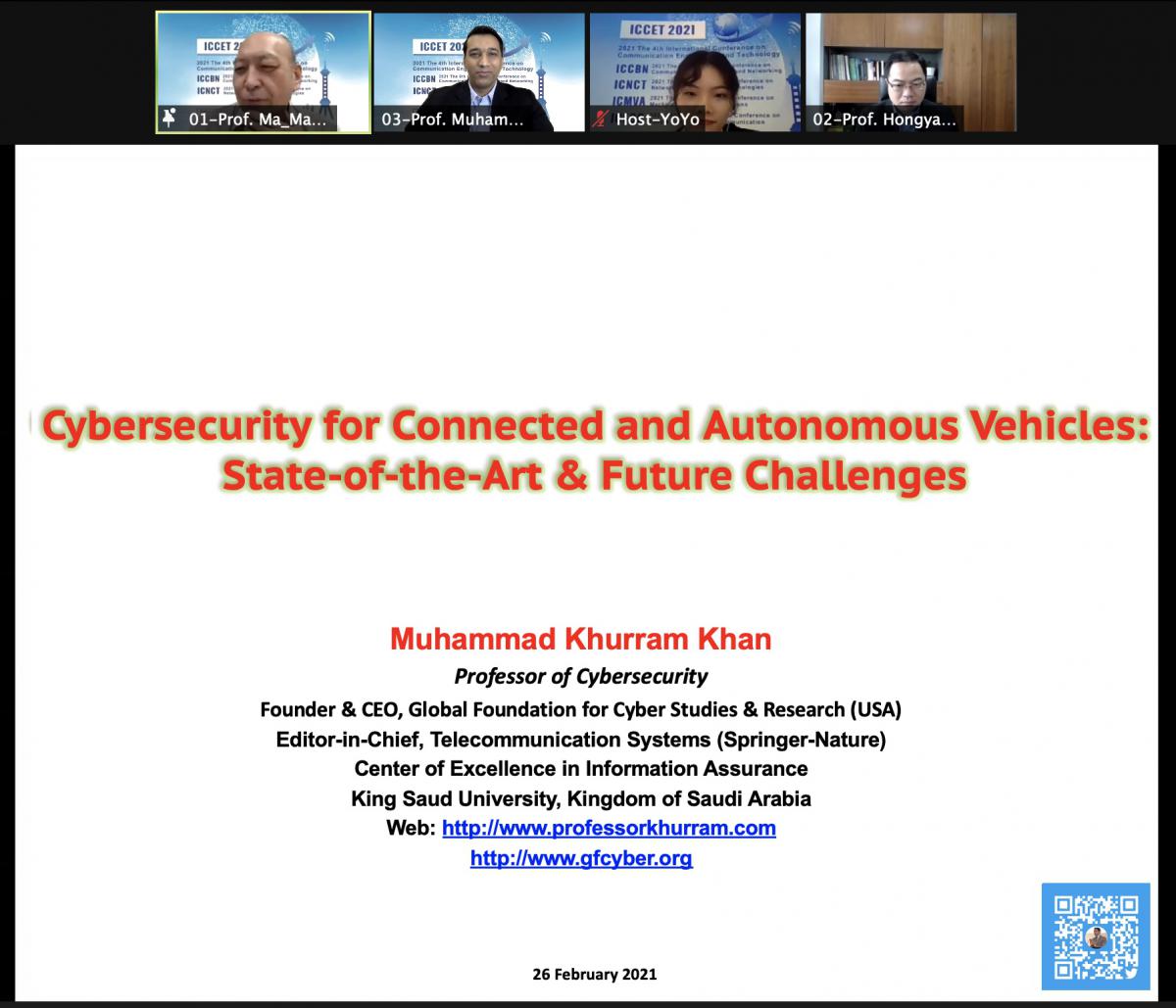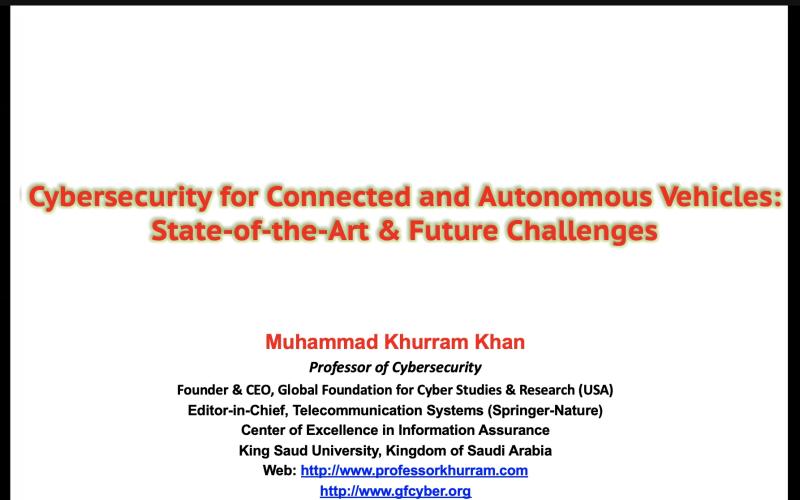KSU Professor Delivers Keynote Speech at an International Conference
KSU PROFESSOR DELIVERS KEYNOTE SPEECH AT AN INTERNATIONAL CONFERENCE
Prof. Muhammad Khurram Khan, a distinguished professor of cybersecurity from the Center of Excellence in Information Assurance at King Saud University, was invited to deliver a keynote speech at 4th International Conference on Communication Engineering and Technology (ICCET’21), Shanghai, China. The three-day overwhelming event is virtually taking place from 25-27 February, 2021. Prof. Khurram presented his keynote on “Cybersecurity for Connected and Autonomous Vehicles: State-of-the-Art & Future Challenges”.
The objective of this conference is to bring together local and foreign scientists, researchers and practitioners from academia, industry, and government to exchange research ideas and results in the emerging areas of wireless and network communications, quantum communications, mobile computing, cybersecurity, coding and communications signal processing, AI and machine learning in communications, and related technologies. The conference is co-chaired by Prof. L. Trajkovic, Simon Fraser University (Canada), Prof. Jie Li, Shanghai Jiaotong University (China), and Prof. Maode Ma, Nanyang Technological University (Singapore).

At the outset of his keynote, Prof. Khurram shed light on connected, smart and autonomous mobility revolution, which is changing the way we travel on road, air and sea. He stated, “An autonomous vehicle is a computer-controlled and network connected vehicle that is capable of sensing its environment and driving safely with little or no human intervention. Autonomous vehicles are equipped with sensors, actuators, algorithms, and processors to execute software and make decisions. These vehicles sense surroundings based on a variety of sensors and cameras installed on different parts of the vehicle”.

Further in his speech, he stated that the market volume of semi-autonomous and autonomous vehicles is estimated at 10.5 million units in 2017 and is expected to grow to 67.5 million units by 2028. The market size of autonomous vehicles in 2019 was predicted to be at a value USD 54.23 billion and by year 2026 is predicted to be USD 556 billion, that makes almost 10 times. The trends pertaining to the future direction of the autonomous vehicle domain indicate that it will emerge as an integrated and intelligent transportation system with improved vehicle safety and it would alleviate impact on the environment with zero carbon footprint. He also discussed plenty of challenges associated with connected and autonomous vehicles, which need careful attention from industry, policy makers, civil society, and others involved in this ecosystem.
To elaborate on the dark side of the connected and autonomous vehicles, he uttered, “Autonomous vehicles are actually connected computers in motion and the risks posed to them by malicious cyber threat actors make the issue of security more important than ever before. As other computing systems and applications, hackers can also exploit vulnerabilities of the software, hardware, and communication systems of automobiles and we have seen such examples recently e.g. hacking of some commercially available cars. These threat actors may have their nefarious motives and they could be cyber activists, criminals, competitors, and state sponsored adversaries with specific agenda”. Moreover, Prof. Khurram presented some of his research outcomes in the area of automotive cybersecurity conducted at CoEIA, King Saud University. He also discussed some future challenges and research directions in this area.

The conference organizers also invited some other internationally renowned speakers, including Prof. M. Ma (NTU, Singapore), Prof. H. Fu, (Tsinghua University, China), Prof. M. Zukerman (IEEE Fellow) (City University of Hong Kong), Prof. K. Wu (Shanghai Jiaotong University, China), Prof. C.P Fan (National Chung Hsing University, Taiwan). The conference is virtually attended by a large number of attendees, including faculty members, practitioners, students, and researchers, etc.

